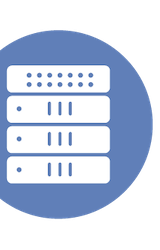Enrico Signoretti, Jason Collier, and Matt Leib join the Voices in Innovation podcast on Gigaom to talk about Tech Field Day Extra at Intel Memory and Storage 2020. On the podcast, they dig into Intel’s presentations and discuss Intel Persistent Memory. Head over to the Gigaom website to check out the podcast, and head to our website to look at Intel’s presentations from the event!
Storage Field Day 21 – Intel
Intel presented at Storage Field Day in January, where Barry Coombs joined us as a delegate. Barry created a doodle covering Intel’s presentation, including notes on Intel Optane Technology and how Intel plans to continue investing, developing, and scaling the Intel Optane business. To see what else Barry included in his doodle covering Intel’s presentation, visit Tech Doodles!
Is Hardware Innovation Accelerating – Hardware vs. Software Innovation (Round 6)
As he looks at the IT Industry, Ray Lucchesi sees something changing. As a delegate at the first ever AI Field Day late last year, he got to see several sponsors present on their latest innovations in the field. In an ongoing segment on his blog, RayOnStorage, Ray looks at the differences between hardware and software innovation. As part of his post, he considers some of the incredible progress being made in hardware like neuromorphic chips, including those that Ray saw BrainChip present on. Ray writes that Intel is also helping to push the hardware innovation forward with their work. Be sure to check out Ray’s full analysis, as well as BrainChip and Intel’s presentations from AI Field Day on our website!
Intel Memory and Storage Moment 2020 – Intel Optane Announcements
Max Mortillaro was a delegate at Intel Memory and Storage Moment 2020 in December and follows the event with an exploration of Intel’s Optane announcements. Max recognizes that 2020 has been a pivotal year for Intel and is excited about Optane/Persistent Memory, as he notes that this technology promises a brave new world 5-10 years from now. To find out what else Max had to say about Intel’s latest announcements at this Tech Field Day Exclusive with Intel Memory and Storage, visit TECHunplugged!
Intel Memory Storage 2020 Briefing
Barry Coombs had the opportunity to attend the Tech Field Day Exclusive with Intel Memory and Storage as a delegate in December and interact directly with the Intel team as they recapped their keynote sessions. In his latest edition of Tech Doodles, Barry highlights the presentations including Intel’s six pillars, utilizing Optane in conjunction with DRAM, and Intel’s DAOS software. If you haven’t yet, be sure to check out our website to watch all the videos from the Tech Field Day Exclusive with Intel Memory and Storage!
Architecting AI Infrastructure
As a delegate at the first ever AI Field Day earlier this year, Gina Rosenthal helped to pioneer Tech Field Day into a new topic area! On 24×7 IT Connection, she writes about several the presenters she saw including BrainChip, Red Hat, Intel, MemVerge, and VAST Data. Gina notes that with the pool of professionals building AI infrastructures growing, there is an increased need for education around architecting those infrastructures. Our thanks to Gina for being on the delegate panel at AI Field Day, we hope you check out her deep dive!
Intel Memory & Storage Moment 2020
It was a pleasure to team up with Intel on the Intel Memory & Storage Moment 2020! At the event, delegate Barry Coombs saw keynotes from the Intel team on a variety of topics including several key product announcements. In his latest version of TechDoodles, Barry artistically recaps day one of IMS20. Check out his doodle and then head over to the Intel website to see the Day 1 keynotes!
Tomversations: Episode 11 – Data Processing Units (DPUs)
In the latest episode of Tomversations, Tom Hollingsworth takes us through the various types of chips that you might find in modern computing, from the workhorse x86 CISC chips favored by Intel to the specific ASICs and FPGAs that help in purpose-built devices. Along the way, Tom helps frame the discussion around DPUS and why they’re not just for networking traffic any more.
Network Field Day 23: Intel’s Performance-Enhancing Ethernet Chip Technologies
At Networking Field Day, delegate Pete Welcher was impressed with Intel’s presentation highlighting the new features in the powerful Intel 800 series Ethernet chips and NIC’s. Pete writes about Intel’s four main presentation topics including ADQ, NVMEoF, DDP, and Barefoot Networks. For the full analysis of Intel’s presentations check out Pete’s post and for the videos of their presentations head over to the Tech Field Day website!
Storage Field Day and the Direction of Travel
The presenters at Storage Field Day in August had a concrete understanding of what practitioners actually want and need. Or so says Paul Stringfellow, one of our twelve delegates who attended the virtual event. He writes summaries of the great work being done and information presented by Nebulon, Qumulo, Cisco, and Intel, and notes how each sponsor is listening to the needs of IT professionals everywhere. Check out the presentations from each of these companies on the Tech Field Day website!
Network Field Day 23 Overview, or Throw Out Your Net Management Tools, They’re Obsolete!
There is a network management revolution going on, and legacy systems are no longer going to cut it. Airvine, Apstra, Arista, Boradcom, Catchpoint, Cisco, Intel, IP Fabric, Juniper Networks and PathSolutions came together at Network Field Day 23 to showcase how each of their products is making waves in the network management space. Peter Welcher, Network Field Day 23 delegate and tech expert came to the conclusion that it is time to modernize company’s network management tools, or die, based on what he saw at the event.
Intel Optane and the DAOS Storage Engine
There’s no doubt that Intel’s Distributed Asynchronous Object Storage (DAOS) engine is fast, but other than speed what does it have going for it? Storage Field Day delegate Dan Frith digs into Intel’s latest offering and highlights some of the exciting pieces of it including simple scalability and its open source nature. Check out Dan’s analysis of the Intel DAOS offering on his blog and check out the Intel team presenting at Storage Field Day.
106: Greybeards Talk Intel’s New HPC File System With Kelsey Prantis, Senior Software Eng. Manager, Intel
At Storage Field Day, delegate Ray Lucchesi had the opportunity to see Intel present on their new Optane Persistent Memory (PMEM) technology. In the latest episode of his podcast, GreyBeards On Storage, he talks with Intel’s Senior Software Engineering Manager Kelsey Prantis about Intel’s DAOS (Distributed Architecture Object Storage), a new HPC (high performance computing) file system. Ray writes that “DAOS represents the birth of a new generation of HPC storage.” Check out Ray’s GreyBeards On Storage podcast to hear their informative conversation!
Looking Forward to Network Field Day 23
Pete Welcher posted about our September Networking Field Day event over on LinkedIn. He’s looking forward to the event overall, but the highlight of this article are his thoughts about the presenting companies. He mentions Arista, Cisco, Juniper Networks, and Palo Alto, which he calls “four of the top five” networking companies. He’s also keen on seeing Apstra, Broadcom, Catchpoint, Intel, PathSolutions, and VMware, though the latter is not able to present at this event this time.
Intel Regains IO500 HPC Bragging Rights From WekaIO
Chris Mellor saw Intel’s presentations at Storage Field Day and was intrigued by their use of their open source file system DAOS. In Blocks and Files, Chris writes about Intel taking the first and third place slots in the IO500 benchmarks, in part because of their DAOS system. Be sure to check out Chris’s post and Intel’s presentations at Storage Field Day on our website!
Intel Is Still a Formidable Force
Chin-Fah Heoh saw the videos of Intel presenting at Storage Field Day and was impressed with their progression in terms of storage technologies. Chin-Fah writes that their Intel’s Optane technology has been a true game changer. If you haven’t yet, be sure to take a look at Intel’s presentations on their Optane technologies the Tech Field Day website!
At Storage Field Day, Industry Analysts Applaud Innovation Set in Motion by Intel® Optane™ Technology
It was great to have Intel as one of our presenters for Storage Field Day in early August! Kristie Mann was a presenter and writes that Intel utilized their time to share a vision of the evolving memory and storage landscape. She writes a recap of their appearance at Storage Field Day and shows how Intel is opening the door to innovation through their new services. Their presentations on the many uses of Intel Optane Technology are also available in Kristie’s post. Check them out!
“High Optane” Fuel for Performance
While attending Storage Field Day as a delegate in early August, David Chapa found himself very impressed with Intel. David writes that the Intel Optane Persistent Memory Solution was a highlight of Storage Field Day for him and that it represents a potential “game-changer in high performance computing.” Be sure to check out David’s post and the videos of Intel’s presentations from our last Storage Field Day!







